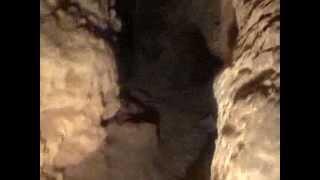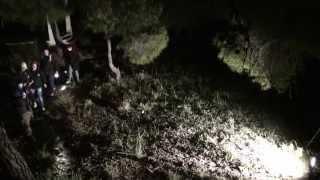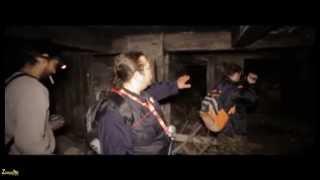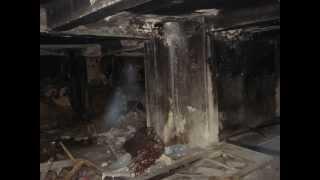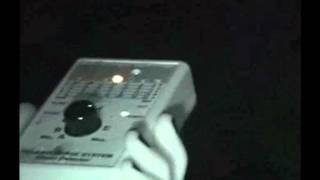How to Make Soldier's Hardtack
In this video, Marianne will cover how to make soldier's hardtack.
History of Soldier's Hardtack
Some early physicians associated most medical problems with digestion. Hence, for sustenance and health, eating a biscuit daily was considered good for one's constitution. The bakers of the time made biscuits as hard as possible, as the biscuits would soften and become more palatable with time due to exposure to humidity and other weather elements. Because it is hard and dry, hardtack (when properly stored and transported) will survive rough handling and temperature extremes. The more refined captain's biscuit was made with finer flour.
To soften, hardtack was often dunked in brine, coffee, or some other liquid, or cooked into a skillet meal. Because it was baked hard, it would stay intact for years if kept dry. For long voyages, hardtack was baked four times, rather than the more common two, and prepared six months before sailing.
In 1588, the daily allowance on board a Royal Navy ship was one pound of hardtack, plus one gallon of small beer. In 1667, Samuel Pepys first regularized naval victualing with varied and nutritious rations. Royal Navy hardtack during Queen Victoria's reign was made by machine at the Royal Clarence Victualing Yard at Gosport, Hampshire, stamped with the Queen's mark and the number of the oven in which it was baked. Hardtack remained an important part of the Royal Navy sailor's diet until the introduction of canned foods; canned meat was first marketed in 1814, and preserved beef in tins was officially introduced to the Royal Navy rations in 1847.
Hardtack, crumbled or pounded fine and used as a thickener, was a key ingredient in New England seafood chowders from the late 1700s.
In 1801, Josiah Bent began a baking operation in Milton, Massachusetts, selling "water crackers" or biscuits made of flour and water that would not deteriorate during long sea voyages from the port of Boston, which was also used extensively as a source of food by the gold prospectors who migrated to the gold mines of California in 1849. Since the journey took months, hardtack, which could be kept a long time, was stored in the wagon trains. Bent's company later sold the original soldier's hardtack crackers used by troops during the American Civil War. The G. H. Bent Company remains in Milton and continues to sell these items to Civil War re-enactors and others.
During the American Civil War (1861–65), three-inch by three-inch soldier's hardtack was shipped from Union and Confederate storehouses. Some of this hardtack had been stored from the 1846–48 Mexican–American War. With insect infestation common in improperly stored provisions, soldiers would break up the hardtack and drop it into their morning coffee. This would not only soften the hardtack but the insects, mostly weevil larvae, would float to the top, and the soldiers could skim off the insects and resume consumption. Some men also turned hardtack into a mush by breaking it up with blows from their rifle butts, then adding water. If the men had a frying pan, they could cook the mush into a lumpy pancake; otherwise they dropped the mush directly on the coals of their campfire. They also mixed hardtack with brown sugar, hot water, and sometimes whiskey to create what they called a pudding, to serve as dessert.
During the Spanish–American War in 1898, some military soldier's hardtack was stamped with the phrase "Remember the Maine".
#haunted #exploring #history #hauntedhistoryrecipe
In this video, Marianne will cover how to make soldier's hardtack.
History of Soldier's Hardtack
Some early physicians associated most medical problems with digestion. Hence, for sustenance and health, eating a biscuit daily was considered good for one's constitution. The bakers of the time made biscuits as hard as possible, as the biscuits would soften and become more palatable with time due to exposure to humidity and other weather elements. Because it is hard and dry, hardtack (when properly stored and transported) will survive rough handling and temperature extremes. The more refined captain's biscuit was made with finer flour.
To soften, hardtack was often dunked in brine, coffee, or some other liquid, or cooked into a skillet meal. Because it was baked hard, it would stay intact for years if kept dry. For long voyages, hardtack was baked four times, rather than the more common two, and prepared six months before sailing.
In 1588, the daily allowance on board a Royal Navy ship was one pound of hardtack, plus one gallon of small beer. In 1667, Samuel Pepys first regularized naval victualing with varied and nutritious rations. Royal Navy hardtack during Queen Victoria's reign was made by machine at the Royal Clarence Victualing Yard at Gosport, Hampshire, stamped with the Queen's mark and the number of the oven in which it was baked. Hardtack remained an important part of the Royal Navy sailor's diet until the introduction of canned foods; canned meat was first marketed in 1814, and preserved beef in tins was officially introduced to the Royal Navy rations in 1847.
Hardtack, crumbled or pounded fine and used as a thickener, was a key ingredient in New England seafood chowders from the late 1700s.
In 1801, Josiah Bent began a baking operation in Milton, Massachusetts, selling "water crackers" or biscuits made of flour and water that would not deteriorate during long sea voyages from the port of Boston, which was also used extensively as a source of food by the gold prospectors who migrated to the gold mines of California in 1849. Since the journey took months, hardtack, which could be kept a long time, was stored in the wagon trains. Bent's company later sold the original soldier's hardtack crackers used by troops during the American Civil War. The G. H. Bent Company remains in Milton and continues to sell these items to Civil War re-enactors and others.
During the American Civil War (1861–65), three-inch by three-inch soldier's hardtack was shipped from Union and Confederate storehouses. Some of this hardtack had been stored from the 1846–48 Mexican–American War. With insect infestation common in improperly stored provisions, soldiers would break up the hardtack and drop it into their morning coffee. This would not only soften the hardtack but the insects, mostly weevil larvae, would float to the top, and the soldiers could skim off the insects and resume consumption. Some men also turned hardtack into a mush by breaking it up with blows from their rifle butts, then adding water. If the men had a frying pan, they could cook the mush into a lumpy pancake; otherwise they dropped the mush directly on the coals of their campfire. They also mixed hardtack with brown sugar, hot water, and sometimes whiskey to create what they called a pudding, to serve as dessert.
During the Spanish–American War in 1898, some military soldier's hardtack was stamped with the phrase "Remember the Maine".
#haunted #exploring #history #hauntedhistoryrecipe
Sign in or sign up to post comments.
Be the first to comment





